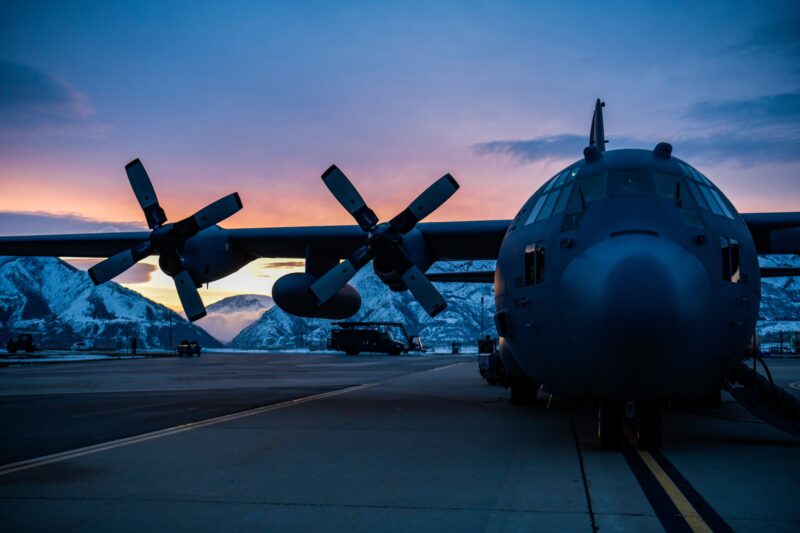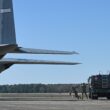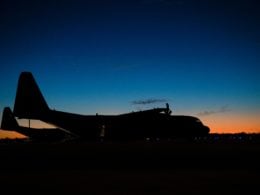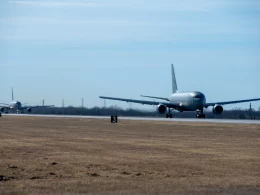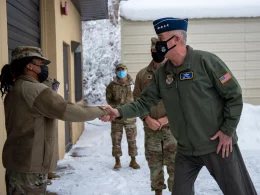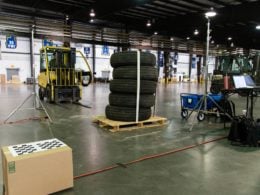HILL AIR FORCE BASE, Utah —
The mountains split with a radiant of colors that hearken a new dawn.
Pumps load, props spin and engines roar, the early birds rise again to shower the range blue, one old and one new.
The 910th Airlift Wing’s aerial spray team returned to Hill Air Force Base, March 6-17, 2023, for its annual aerial spray mission at the Utah Test and Training Range to create fire breaks for wildfire prevention and safe unexploded ordnance removal.
Based out of Youngstown Air Reserve Station, Ohio, the 910th AW maintains the Department of Defense’s only large area fixed-wing aerial spray capability to control disease-carrying insects, pest insects, undesirable vegetation and oil spill dispersion in large bodies of water.
The same Environmental Protection Agency-approved products with biodegradable blue dye were used for swath tracking over the largest overland contiguous special-use airspace within the continental U.S. like in previous years.
But this year’s product sprayed just a bit faster out the unit’s aerial spray-modified C-130H Hercules aircraft as the 910th AW’s brand-new electronic modular aerial spray system made its first operational debut in tandem with a legacy MASS.
The electronic MASS, conceptualized in the early 2000s, was rumored to have been birthed from notes drafted on a restaurant napkin after a successful yet problem-fraught aerial spray mission.
“It’s been a long time coming,” said Lt. Col. Ryan Cooley, the chief of aerial spray assigned to the 757th Airlift Squadron. “A lot of the valves that open and close on the legacy model are physical valves that you have to close by hand, whereas now a lot of the valves on the new system are controlled electronically.”
The legacy MASS is full of analog parts no longer mass-produced requiring expensive specialty orders to make repairs. Developed in the 1980s, before the peak of the computerized age, the 910th Maintenance Squadron keeps the systems operational for a smooth transition into the electronic age of military aerial spray.
“With the EMASS you program in what you need and the computer does what you want it to do,” said Staff Sgt. Zachary Wilson, an aerial spray maintenance technician assigned to the 910th MXS. “That’s the biggest part, the computer is a game changer. What we can do now goes so much further than what we could before. The possibilities are endless and we’re just getting started with it.”
Not only is the new EMASS smarter than its predecessor it’s bigger. The legacy system has a max capacity of 2,000 gallons, flying missions at approximately 1,800 gallons to allow room for sloshing in the tank. The capacity of its successor is up to 3,500 gallons with the ability to fly missions at an estimated 3,000-gallon capacity. The legacy model is tried and true whereas the new model has room to grow with things to learn and kinks to work out.
“We didn’t totally run the new system through its paces as far as how much product it can carry but both performed pretty well,” said Cooley. “The old one’s tough. There are a lot of moving parts past their useful life but our spray maintenance team does a phenomenal job keeping it running.”
One of the five legacy MASSs at the 910th AW was retired when the first EMASS was received. Moving forward it’ll be a one-for-one swap once the contract is finalized. Until then, both systems will continue to operate together until further operational testing is completed and the electronic system is verified to be compatible with C-130J Super Hercules aircraft. In late December 2022, Secretary of the Air Force Frank Kendall announced Youngstown ARS as the preferred location to receive eight new C-130Js.




